Search
Remove Ads
Advertisement
Summary 
Loading AI-generated summary based on World History Encyclopedia articles ...
Search Results
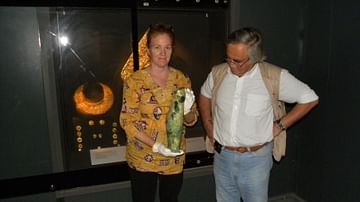
Image
Professor Theodore Antikas with Laura-Wynn Antikas Holding the Shorter Greave from the Royal Tomb of Vergina
Professor Theodore Antikas with Laura-Wynn Antikas holding the shorter greave from the Royal Tomb of Vergina in front of the display cabinet in the Archaeological Museum of Vergina. Courtesy of the Antikas team archive.
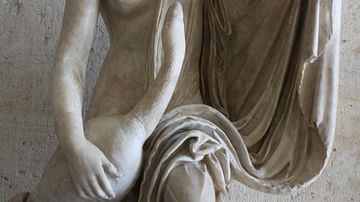
Definition
Leda
Leda is a figure from Greek mythology who was famously seduced by Zeus when he took the form of a swan. She was a queen of Sparta and mother of beautiful Helen who sparked the Trojan War, and the Dioscuri twins. Leda and the swan was a popular...

Image
Elizabethan Stage, the Swan Theatre
A sketch by Aernout van Buchel showing actors on the stage of the Swan theatre in 1596 CE in London, one of the principal theatres of Elizabethan theatre. (Utrecht University Library, Netherlands)
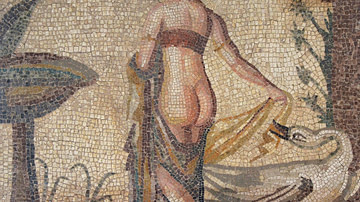
Image
Leda and the Swan
Mosaic depicting Leda and the Swan, once the central panel (emblema) of a mosaic floor discovered in the vicinity of the Sanctuary of Aphrodite at Palaipafos in Cyprus. Late 2nd - early 3rd century CE. (Palaepaphos Museum, Cyprus)

Image
Leda & the Swan
A Roman-period statue of Leda and the swan from Greek mythology. From a 4th century BCE Greek original by Timotheos. (Capitoline Museums, Rome)

Image
Marble Figurine of Leda Avoiding the Swan
Attic table support, depicting Leda avoiding the swan, c. before 250 CE. Archaeological Museum of Thessaloniki, Greece. Founded c. 316 BCE and located at the heart of the Thermaic Gulf in the Aegean, the emporium city of Thessaloniki might...
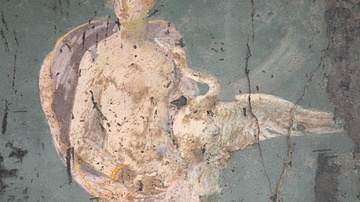
Image
Leda and the Swan Fresco from Stabiae
Roman fresco depicting Leda and the Swan. From Villa Arianna at Stabiae. Naples National Archaeological Museum. 1st century CE.
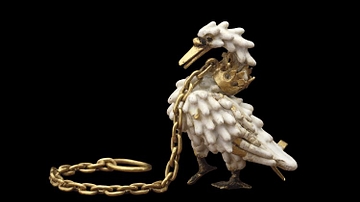
Image
Dunstable Swan Jewel
The Dunstable Swan Jewel, a white swan with coronet which was the badge of the Bohun family and adopted by Henry Lancaster, son of John of Gaunt and grandson of Edward III of England. Gold and enamel, c. 1400. Height: 3.4 cm. British Museum...

Article
The Origins of British Pub Names
Pubs remain a prominent feature of the rural and urban landscapes of Britain, but their names very often date back to medieval times. Red lions, white horses, and colourful characters peer from pub signs as landlords choose names to represent...
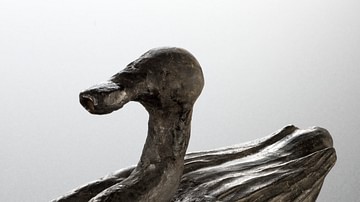
Image
Roman Feeding Bottle in the Shape of a Swan
Roman earthenware bottle in the shape of a swan, used to feed milk or water to babies and infants, 199 BCE to 500 CE.
Sir Henry Wellcome's Museum Collection, Science Museum Group Collection, London.